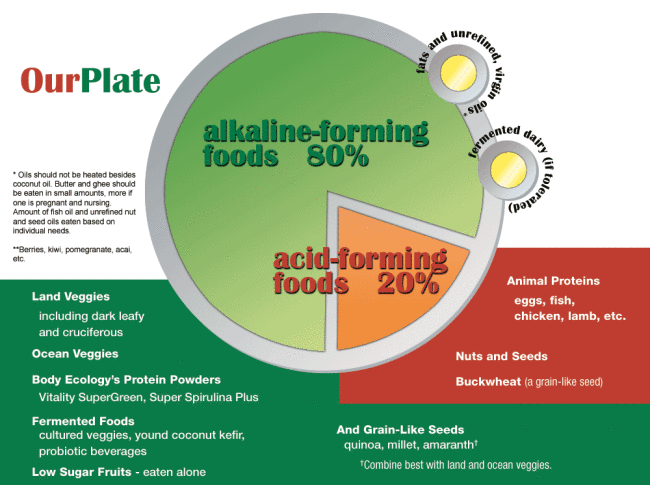Cavities and Candida: How to Protect Your Family’s Teeth
Many of us grew up learning that sugar rots our teeth, but a new study reveals more of the story.
Researchers at the University of Pennsylvania recently used animal studies to investigate the relationship between Candida yeast and cavities. (1)
They found that:
- Candida co-infection almost doubled the number of cavities.
- Candida co-infection boosted the severity of cavities.
According to Hyun Koo and his colleagues at the University of Pennsylvania’s School of Dental Medicine, this sort of tooth decay may have to do with a partnership between mouth bacteria and Candida yeast.
Tooth decay may have a direct relationship to mouth bacteria and Candida yeast. Stevia is the perfect naturally sweet substitute for sugar that feeds bacteria and yeast in the mouth and promotes tooth decay.
Plaque—Home, Sweet Home
Dental plaque develops on teeth, usually around the gum line. Over time, it can accumulate, forming hard ridges on the surface of the teeth. Plaque isn’t just a buildup of food residue; it is also created by bugs living in the mouth. Plaque is what is known as a biofilm, a protective matrix that houses bacteria and yeast.
According to Koo, our teeth have been heavily coated with plaque since the introduction of agriculture 10,000 years ago—when large amounts of starch moved into the diet.
Cavities begin with our diet. The more sweet foods we eat, the more bacteria we feed. Communities of acid-forming bacteria build housing (or biofilm), which shelters and protects them. Acid-forming bacteria thrive, while the acids they release wear down tooth enamel. (2)
Cavities and Candida: Bacteria and Yeast Team Up to Make Tooth Decay Worse
For quite some time now, the bacteria known as Streptococcus mutans have been held responsible for tooth decay. But recently, researchers have noticed that Candida yeast is almost always in the plaque of children with cavities. (3)
While it is common for Candida to grow on the cheek and tongue (for example, thrush is Candida overgrowth in the mouth), it is not so common to find Candida in plaque. Candida simply isn’t equipped to hold on to teeth—unless it partners up with Streptococcus mutans. S. mutans clings to the surface of teeth using its own biofilm. This triggers Candida to produce its own glue-like matrix, enabling it to hold on to teeth and grow.
More plaque means more bacteria and yeast. More bacteria and yeast mean more acid and more tooth decay.
This explains why researchers have found that toddlers and young children with Candida overgrowth in the mouth are more likely to struggle with severe cavities. According to Koo, frequent exposure to sugar just makes matters worse. Sugar and starchy foods feed the bacteria and yeast in the mouth, creating the perfect environment for yeast overgrowth and tooth decay.
3 Family-Friendly Tips to Prevent Cavities
Fighting tooth decay means controlling Candida overgrowth. Early childhood cavities are an aggressive and painful form of tooth decay that can show up in preschool children.
The Body Ecology Diet is a sugar-free, gluten-free, and initially casein-free probiotic diet. It is specifically designed to fight Candida overgrowth.
Follow these tips to help prevent cavities:
- Use a few drops of Stevia or a couple teaspoons of Lakanto to sweeten foods and beverages.
- Make sour, fermented foods and probiotic beverages a part of every meal.
- Follow the Principles of Food Combining and 80/20.
What To Remember Most About This Article:
Research performed in animal studies has found a relationship between Candida yeast and cavities. Cavities may be caused by a partnership between Candida and mouth bacteria. The more sweet foods you eat, the more you feed bacteria in the mouth. This cycle supports harmful, acid-forming bacteria that can wear down tooth enamel.
When bacteria and Candida team up, it makes tooth decay even worse. Researchers have concluded that toddlers and young children with Candida overgrowth in the mouth are more likely to have severe cavities.
Protect your family’s teeth and health with these tips from The Body Ecology Diet to fight Candida overgrowth:
- Use Stevia or Lakanto to naturally sweeten food and drinks.
- Enjoy fermented foods and probiotic beverages at each meal.
- Follow the Body Ecology Principles of Food Combining and 80/20.
- [product id=”22″]
- [product id=”125″]
- [product id=”71″]
- [product id=”1″]
REFERENCES:
- Falsetta, M. L., & Koo, H. (2014). Beyond Mucosal Infection: a Role for C. albicans-Streptococcal Interactions in the Pathogenesis of Dental Caries. Current Oral Health Reports, 1(1), 86-93.
- Ilie, O., van Turnhout, A. G., van Loosdrecht, M. C. M., & Picioreanu, C. (2013). Numerical Modelling of Tooth Enamel Subsurface Lesion Formation Induced by Dental Plaque. Caries research, 48(1), 73-89.
- Kouidhi, B., Fdhila, K., Ben Slama, R., Mahdouani, K., Hentati, H., Najjari, F., … & Chaieb, K. (2014). Molecular detection of bacteria associated to dental caries in 4–12-year-old Tunisian children. Microbial pathogenesis, 71, 32-36.










